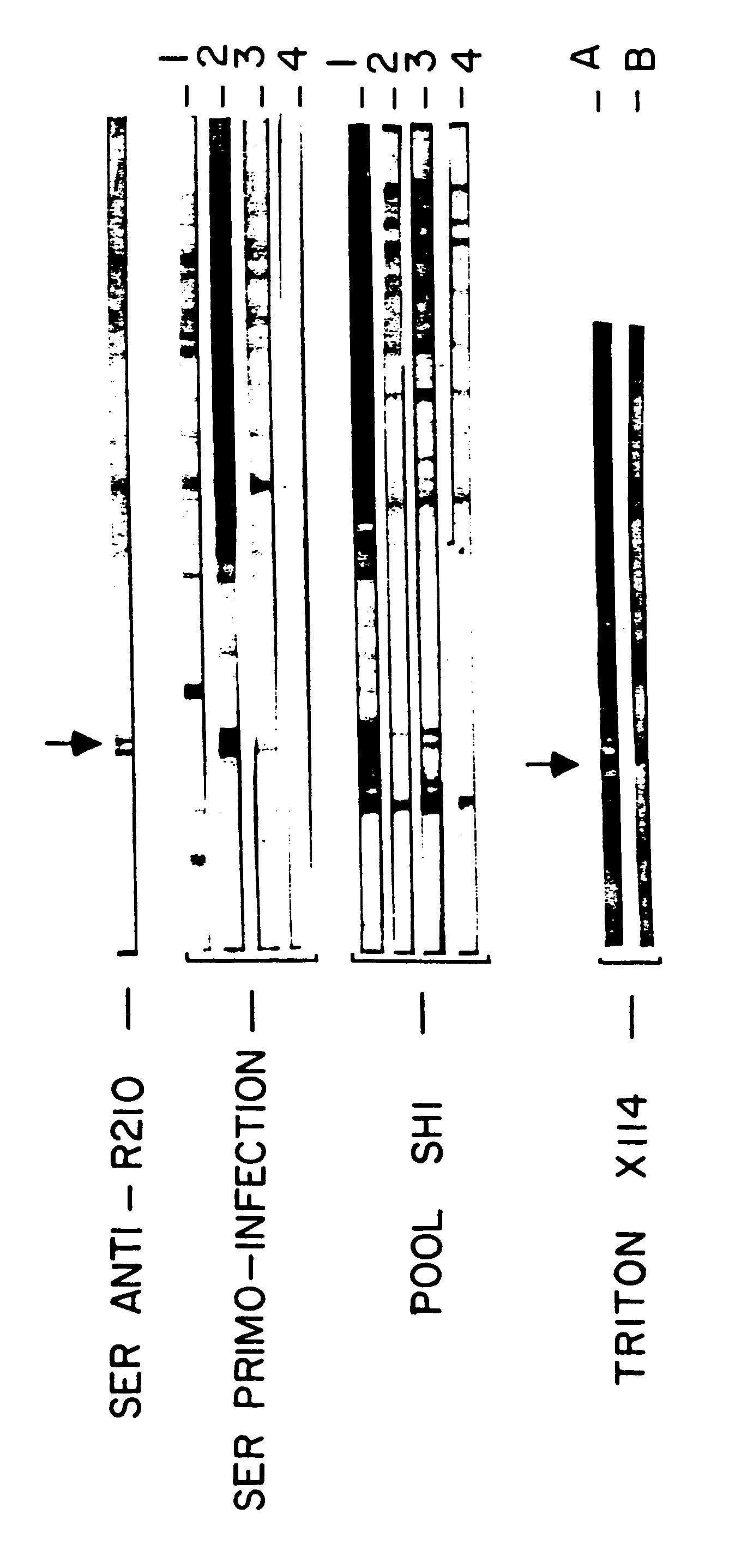Plasmodium falciparum antigens inducing protective antibodies
a technology of antigens and antibodies, applied in the field ofplasmodium falciparum antigens inducing protective antibodies, can solve the problems of partial and labile, long delay before its installation, and difficulty in interpretation of experimental results
- Summary
- Abstract
- Description
- Claims
- Application Information
AI Technical Summary
Benefits of technology
Problems solved by technology
Method used
Image
Examples
Embodiment Construction
In the following example as in all of the experiments described in the present description the immunoglobulins of human plasma are obtained by the method described by A SABCHAREON et al., J. Trop. Med. Hyg. 1991, 45 (3): 297). The ADCI test is described above.
In the following example the specific inhibition indices (S.I.) obtained both with sera of mice immunized with the peptide III and with immune human antibodies purified with the aid of an affinity column bearing the peptide III (procedure described in OKAZI et al.) are compared. Both the sera and the antibodies are capable of recognizing the 48 kD protein both in indirect immunofluorescence and in Western blot tests, and do so under the same conditions as previously (IgG2 of sensitive patients and IgG1 or IgG3 of protected patients). Finally, the immunopurified antibodies like the antibodies induced by injection of peptide II into the mouse tested in ADCI tests confirm that they are capable of inducing the inactivation of the p...
PUM
| Property | Measurement | Unit |
|---|---|---|
| molecular weight | aaaaa | aaaaa |
| molecular weight | aaaaa | aaaaa |
| resistance | aaaaa | aaaaa |
Abstract
Description
Claims
Application Information
 Login to View More
Login to View More - R&D Engineer
- R&D Manager
- IP Professional
- Industry Leading Data Capabilities
- Powerful AI technology
- Patent DNA Extraction
Browse by: Latest US Patents, China's latest patents, Technical Efficacy Thesaurus, Application Domain, Technology Topic, Popular Technical Reports.
© 2024 PatSnap. All rights reserved.Legal|Privacy policy|Modern Slavery Act Transparency Statement|Sitemap|About US| Contact US: help@patsnap.com









